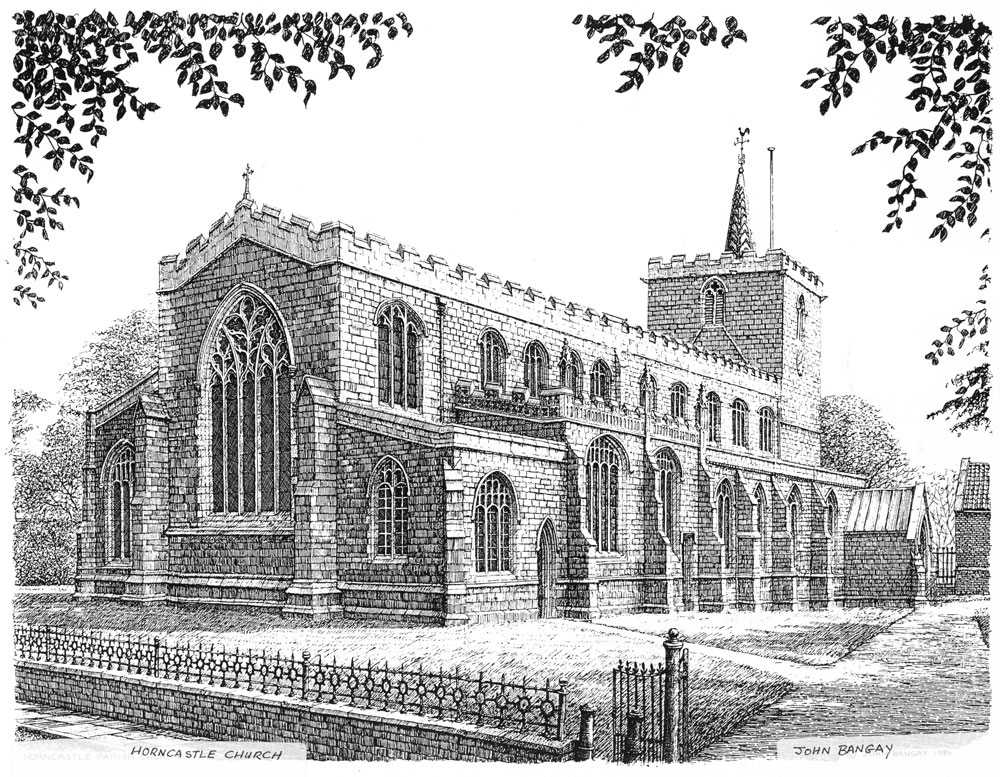Reproductions of John’s work are currently sold mostly in Cathedrals, Churches and other Historical buildings gift shops, as well as directly through this website.
This catalogue is divided into four sections; Cathedrals and Churches; Wind and Watermills; Other historic buildings and Christmas Card sections. You can purchase any of his prints below directly from John. Please give drop him a line here.
St. Mary's Church, Horncastle, Lincolnshire

Built, it is believed, on the site of a Roman Church- Horncastle was once a walled Roman town,- the church later became a Saxon church before the construction of this church in the 13th century. It has an Early English style, 5-bay nave, north and south chapels in the Decorated style and much Victorian reconstruction, including the east window. Its most famous relic is probably the memorial over the font to Sir Ingram Hopton, who was killed nearby at the battle of Winceby on October 11th, 1643, one of the smallest, but most decisive battles of the English Civil War. At this mainly cavalry led battle, the royalists were repelled in an attempt to break the siege of nearby Bolingbroke Castle. Before his death, Hopton distinguished himself, shooting at Oliver Cromwell, who was leading one of the Cavalry units. Cromwell’s horse was slain but he later remounted and fought on, his heroics later contributing to his eventual command of all the parliamentary forces. The Royalists were routed and fled back to Horncastle, where many were slain or captured, trapped by a parish gate which became jammed.
Print No. 133
St. Mary's Church, Horncastle, Lincolnshire

Built, it is believed, on the site of a Roman Church- Horncastle was once a walled Roman town,- the church later became a Saxon church before the construction of this church in the 13th century. It has an Early English style, 5-bay nave, north and south chapels in the Decorated style and much Victorian reconstruction, including the east window. Its most famous relic is probably the memorial over the font to Sir Ingram Hopton, who was killed nearby at the battle of Winceby on October 11th, 1643, one of the smallest, but most decisive battles of the English Civil War. At this mainly cavalry led battle, the royalists were repelled in an attempt to break the siege of nearby Bolingbroke Castle. Before his death, Hopton distinguished himself, shooting at Oliver Cromwell, who was leading one of the Cavalry units. Cromwell’s horse was slain but he later remounted and fought on, his heroics later contributing to his eventual command of all the parliamentary forces. The Royalists were routed and fled back to Horncastle, where many were slain or captured, trapped by a parish gate which became jammed.
Print No. 133


